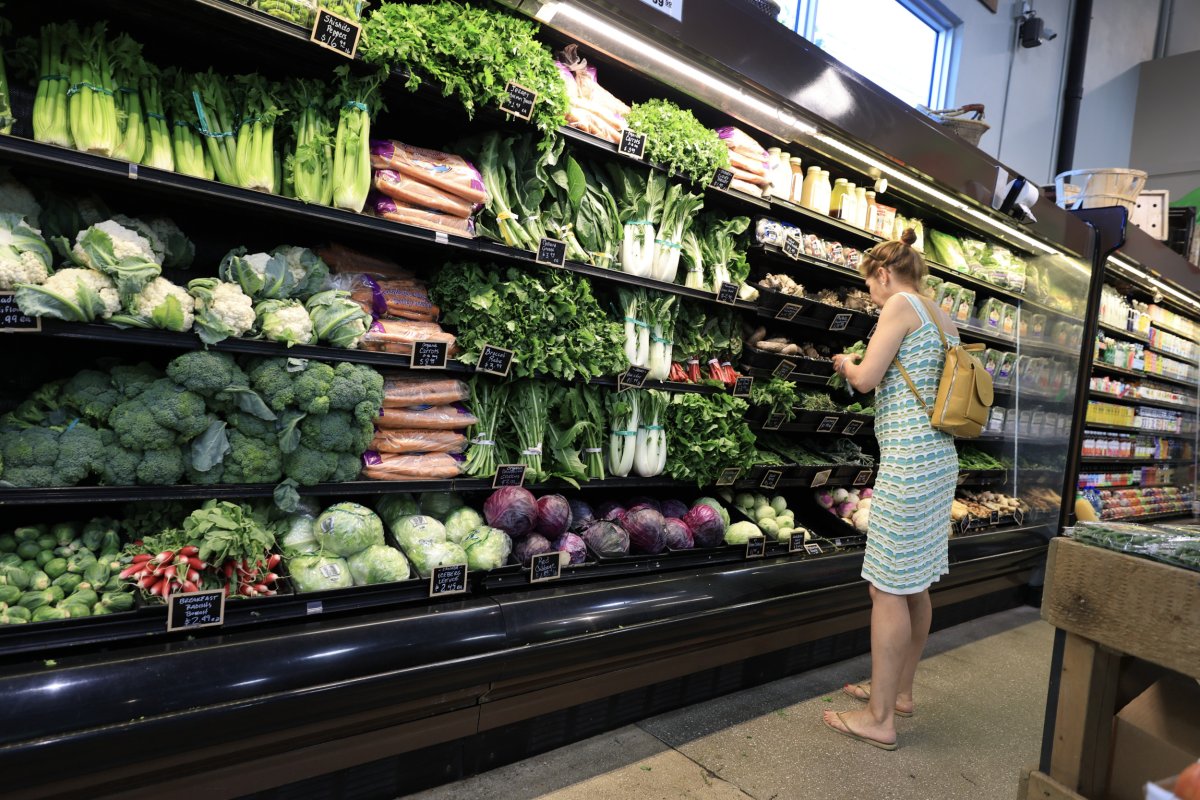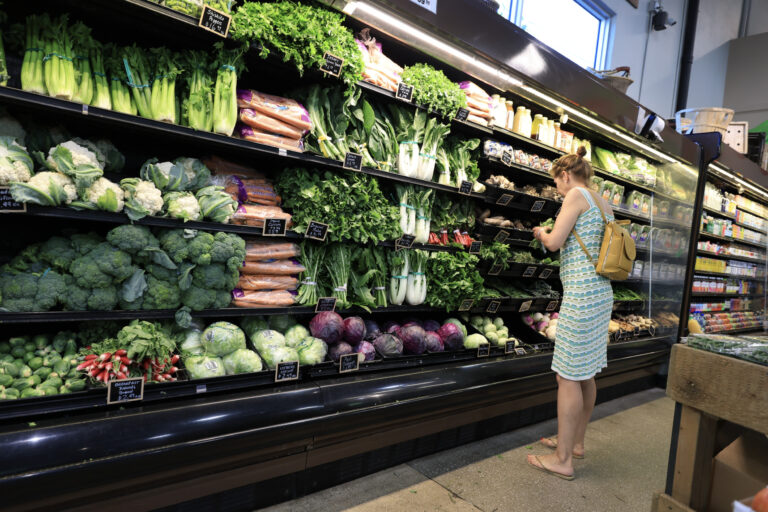Since President Donald Trump took office in January, grocery prices at the national level have remained elevated and, in many categories, are rising even further.
Federal forecasts and multiple price trackers show continuing inflation for common items such as eggs and beef, and the USDA Economic Research Service projected overall food prices will increase over the remainder of this year and 2026.
Why It Matters
Food represents a large and visible share of household spending, and high grocery bills influence public perceptions of the economy and the administration’s performance.
A mid-2025 poll from The Associated Press-NORC Center for Public Affairs Research found that a majority of Americans reported stress over grocery costs, and retailers have reported shoppers shifting purchases toward cheaper brands and smaller sizes. Roughly 53 percent of respondents said grocery costs were a “major” stressor.

Joe Raedle/Getty Images
What To Know
Trump campaigned on promises of lowering grocery costs, but federal forecasts and private trackers showed only modest easing overall and price gains in several food staples.
The USDA Economic Research Service reported that the all-food Consumer Price Index (CPI) rose 0.3 percent from May to June and was 3 percent higher than June 2024.
It also projected overall food prices would rise 2.9 percent this year and 2.7 percent in 2026.
“Most headlines lean on ‘core CPI,’ which excludes food and energy,” Kevin Thompson, CEO of 9i Capital Group and host of the 9innings podcast, told Newsweek. “That’s fine for economists, but for real households, those are the two biggest non-discretionary expenses. So when they say prices are ‘stabilizing,’ it leaves out the areas where people actually feel it the most.”
The exact price increases vary by grocery item.
NBC News’ grocery-price tracker showed eggs, chicken and beef remained higher year-over-year in the most recent update. While eggs were up 64 cents, chicken cost 81 cents more and beef had seen an increase of 67 cents.
The USDA projected egg prices to have strong volatility, with a 24.6 percent change forecast for 2025, and beef and veal prices were anticipated to rise substantially, 8.8 percent, this year.
“The reality is that inflation is weighted across categories,” Thompson said. “If your personal diet leans heavy on protein, beef, chicken, coffee, or soda, you’ve likely felt double-digit increases while the official number is closer to 3 percent. Everyone’s ‘personal inflation’ is different, and for many it feels far higher than the reported average.”
Trump previously warned of short-term effects from trade policy, saying, “We may have, short term, a little pain.”
What People Are Saying
Trump said during his campaign: “When I win, I will immediately bring prices down, starting on Day One.”
Thompson also told Newsweek: “Tariffs during Trump’s presidency did raise costs on imported goods, and new tariffs under the current administration are continuing that trend. Immigration policy does have some effect on labor costs in agriculture and food processing, but the bigger driver of food prices has been weather, disease, and global supply chain issues not immigration directly.”
Alex Beene, financial literacy instructor for the University of Tennessee at Martin, told Newsweek: “All of the inflationary pressures that were in place prior to 2025 have largely remained the same, with some everyday items actually going higher in price, if only incrementally so. The prevailing problem is the pricing structure on many consumer goods is formed through a domino effect which includes costs of production, shipping, stocking, and everything in between.
“In order for prices to go lower, not only do you have to have falling demand, but also the series of transactions that make it ready to buy have to trend lower in order for businesses to continue to generate a profit. Until this happens, we’re going to continue to see higher costs.”
What Happens Next
The USDA ERS forecasts and monthly CPI releases from the Bureau of Labor Statistics will remain primary sources to measure whether grocery prices fall back, stabilize or resume faster growth in coming months.
Since Trump’s tariffs have gone into effect, the higher costs will likely be passed down to the consumer, Thompson said:
“Businesses may absorb some costs in the short term, but over time those costs show up in the checkout line. The current tariff environment has raised the baseline market price, which means U.S. producers can charge more too, capturing extra margins.
“Going forward, unless there’s a consistent and predictable tariff policy, shoppers should expect continued price volatility. Once markets adjust to a clear set of rules, prices may stabilize, but likely at a higher level than before.”


